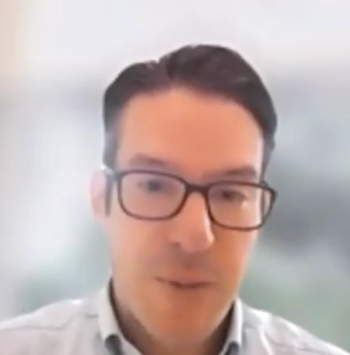
Improved GVHD Prophylaxis Has Broadened the Donor Pool for Stem Cell Transplants, Says Researcher
Less emphasis on full HLA matching means clinicians can find an appropriate donor for any patient, says Antonio Jimenez Jimenez, M.D., of the Sylvester Comprehensive Cancer Center at the University of Miami Miller School of Medicine, and a leading stem cell transplant researcher.
In this first excerpt from an interview with Managed Healthcare Executive, Antonio Jimenez Jimenez, M.D., of the Sylvester Comprehensive Cancer Center at the University of Miami Miller School of Medicine, discusses how improvement in graft-vs-host disease (GVHD) prophylaxis with the addition of post-transplant cyclophosphamide (PTCy) has made stem cell transplants from donors who are imperfectly matched with respect to human leukocyte antigens (HLAs) possible.
Prior to PTCy, there were high rates of GVHD and infection and a need for immunosuppression, and the mortality risk was high, he observes. "The mortality when you were using a highly mismatched donor became prohibitive," Jimenez Jimenez says. "There were no suitable transplant options, so you would just simply tell them, 'Unfortunately we, we can't do a transplant.'"
Jimenez Jimenez explains that HLA is tightly correlated with race and ethnicity and that the majority of donors in the stem cell registries are Caucasians. As a result, the likelihood of finding a fully matched donor for a Caucasian patient is approximately 80% but close to 50% for Hispanic patients and approximately 25% for Black patients. Safer transplantation from mismatched donors, because of more effective GVHD prophylaxis, has, effectively, broadened the donor pool, he says. "By using mismatched grafts, you can offer a transplant to any patient, irrespective of race and ethnicity," says Jimenez Jimenez, noting that is especially important at cancer centers such as Sylvester that have a diverse patient population.
Jimenez Jimenez says that with HLA matching becoming less of a concern, clinicians can focus on other factors that will improve the chances of a good outcome from a stem cell transplant, such as the donor's age. "You can really get picky," he says.
Jimenez Jimenez was co-author of a study published in the Journal of Clinical Oncology last month hat found favorable one-year survival rates among HLA-mismatched unrelated donors who had PTCy-based GVHD prophylaxis with peripheral blood stem cells.
Newsletter
Get the latest industry news, event updates, and more from Managed healthcare Executive.






















































